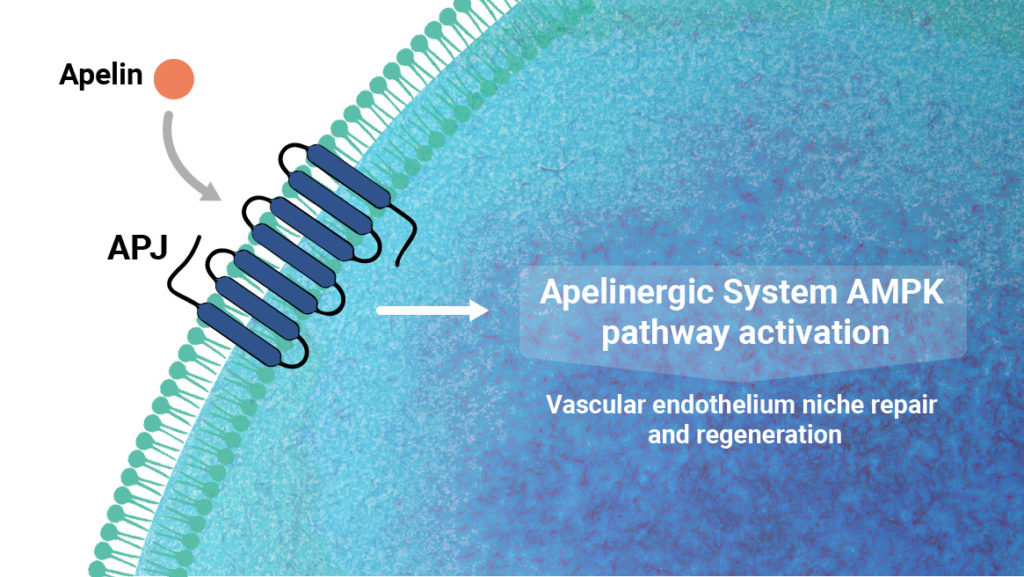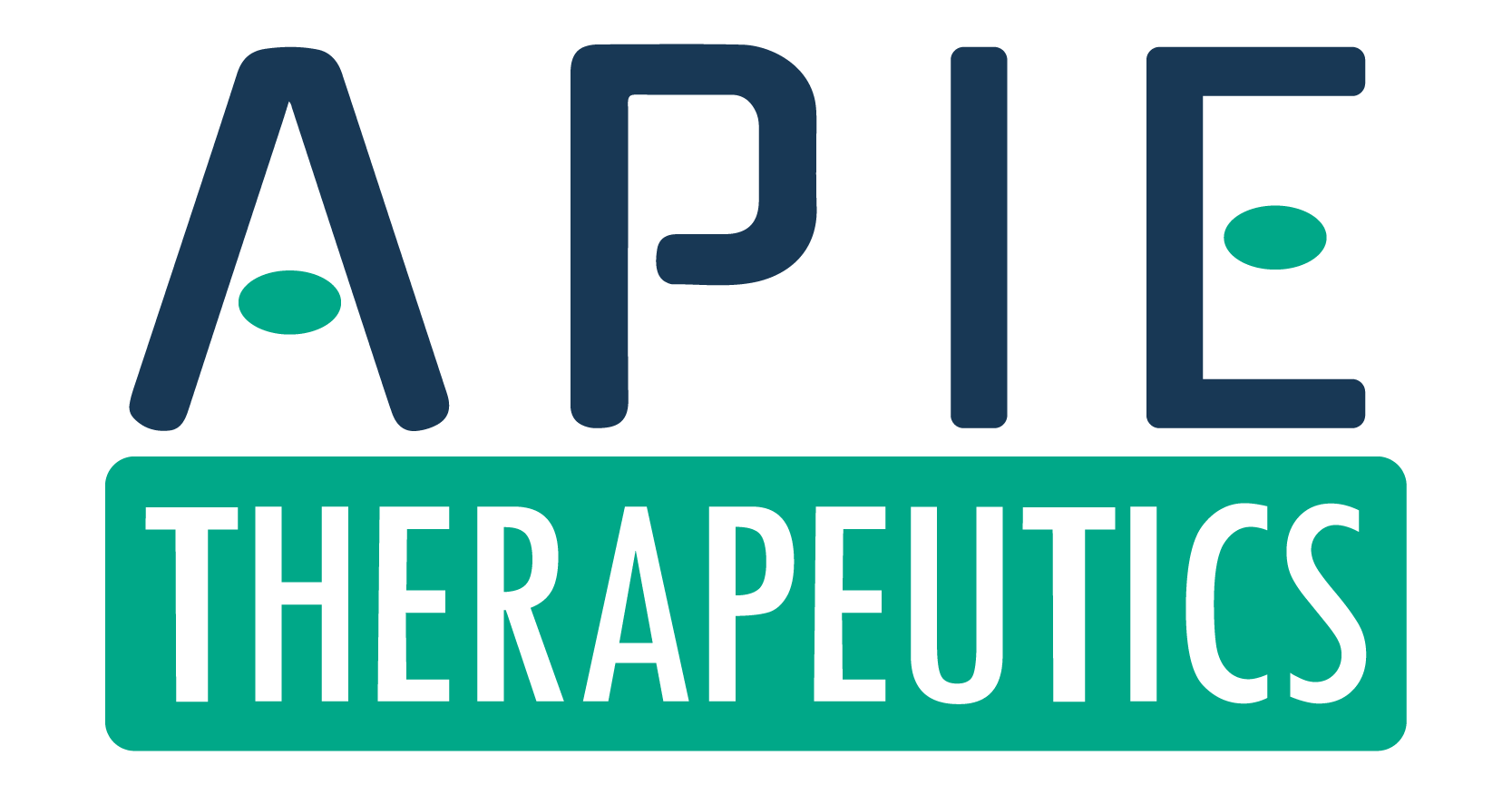Biology
The Biology Behind APIE’s Pipeline Candidates
The APJ Receptor
In a healthy organ system, the wound-healing process is optimized to repair tissue damage. Upon injury, immune cells are recruited to the site of injury and fibrotic scar tissue is produced. The process concludes when resident stem cells are activated to propagate, differentiate into the appropriate cell types and complete the repair to damaged tissue. Activation of resident stem cells and attenuation of the inflammatory response is performed naturally through the APJ receptor.
The APJ receptor plays a vital role in repair and regeneration of damaged microvasculature. The receptor is expressed in various organs (brain, skin, heart, kidney, liver and lungs) on vascular endothelial cells, cardiomyocytes and vascular smooth muscle cells.
Its natural ligand is apelin, which binds to APJ and stimulates the proliferation and migration of resident stem cells to the site of vascular injury. Here, resident stem cells differentiate into endothelial and vascular smooth muscle cells, replacing the damaged tissue and completing the wound-healing process. The activation of APJ quells the original immune response, reducing inflammation and fibrosis to drive the system back into homeostasis.

In chronic diseases where the APJ pathway is deficient, the immune response to the initial vascular injury escalates. A cascade of fibrosis and increased inflammation ensues, leading to excessive, chronic fibrosis, which can damage organ systems. In the lung, this unchecked fibrosis leads to airway disfunction, reducing the transport of oxygen and dramatically increasing mortality.
In chronic diseases where the APJ pathway is deficient, the immune response to the initial vascular injury escalates. A cascade of fibrosis and increased inflammation ensues, leading to excessive, chronic fibrosis, which can damage organ systems. In the lung, this unchecked fibrosis leads to airway disfunction, reducing the transport of oxygen and dramatically increasing mortality.
APIE-s pipeline of drug candidates are designed to stimulate the apelin pathway by activating the APJ receptor.
The apelin-APJ signaling pathway in the vascular niche is biologically activated to protect and promote self-repair after injury. However, uncontrolled injuries such as viral infections, genetics and others can overwhelm the biological pathway leading to the disruption of multiple other biological pathways that results in chronic inflammation, fibrosis, and tissue damage.
APIE’s candidates have potential to address chronic disease including systemic sclerosis -interstitial lung disease (SS-ILD), nephrotic syndrome, peripheral arterial disease and other conditions, in which the natural apelin-APJ signaling pathway is impaired or deficient.

